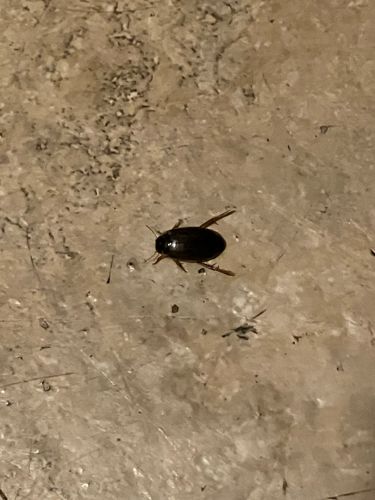Diving Beetle, Water Beetle
Scientific Name: Dytiscidae (family), possibly Hydrophilidae (water scavenger beetle family)
Order & Family: Order: Coleoptera, Family: Dytiscidae (likely) or Hydrophilidae
Size: Most species range from 2 mm to 45 mm (0.08 to 1.8 inches) in length, though some tropical species can be larger.

Natural Habitat
Aquatic environments such as ponds, lakes, slow-moving streams, and temporary pools. They are often found under rocks or vegetation at the bottom.
Diet & Feeding
Mainly carnivorous; larvae and adults prey on various aquatic invertebrates (such as insect larvae, worms, and small crustaceans), tadpoles, and small fish. Some species may also scavenge or consume plant matter.
Behavior Patterns
Diving beetles are expert swimmers, using their flattened, fringed hind legs to propel themselves through water. They carry an air bubble under their wing covers (elytra) to breathe underwater, periodically surfacing to replenish it. They can also fly, especially at night, to disperse to new water bodies. Larvae are also aquatic predators, often with prominent, sharp mandibles.
Risks & Benefits
Generally beneficial as predators that help control populations of other aquatic insects, including mosquito larvae. They are not typically harmful to humans, though larger species can deliver a pinch if handled. They serve as a food source for fish and birds, playing a role in freshwater ecosystems.
Identified on: 10/2/2025